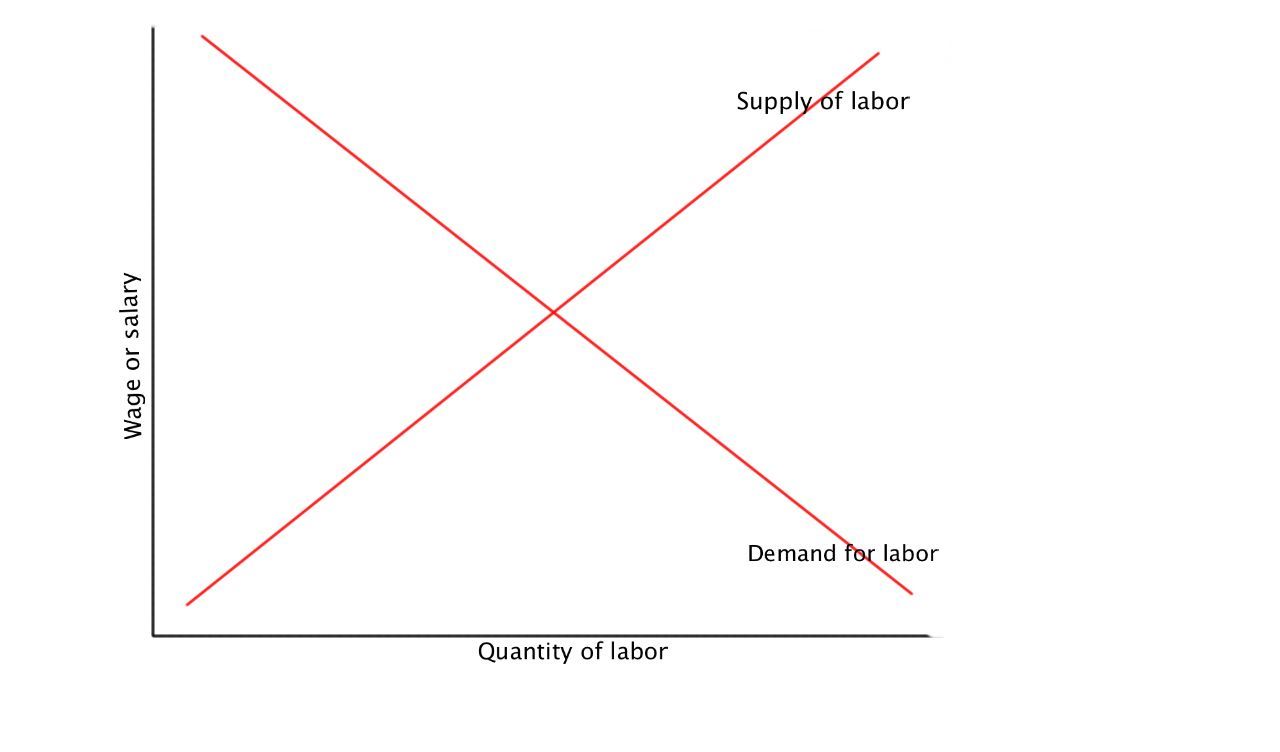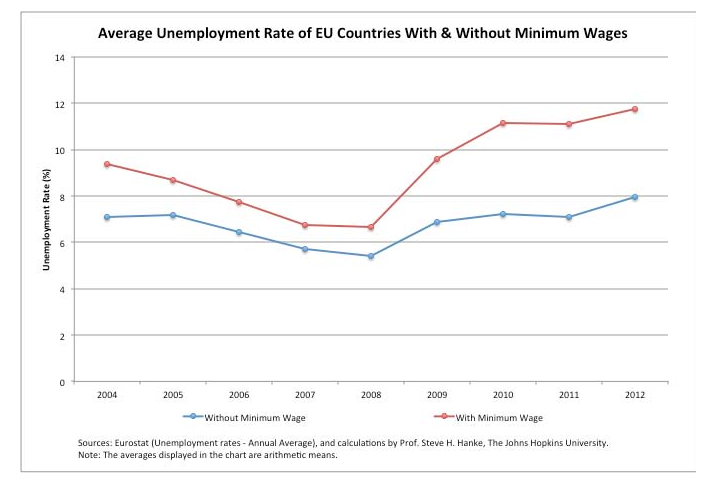Increasing the minimum wage is a continuing favorite of progressives, usually proposed as a way to boost the economy and improve conditions for low-wage workers. It is probably not effective at either.
Theory
A minimum wage is a price control. It sets the minimum price for an hour of labor. The history of price controls shows clearly that they are not effective. Wikipedia summarizes the point: “economists usually agree that price controls don’t accomplish what they are intended to do and are generally to be avoided”. Price controls have a long history, beginning with the Emperor Diocletian and continuing today with rent control in New York City and electricity pricing in California.
The real tragedy of minimum wage laws is that they are supported by well-meaning groups who want to reduce poverty. But the people who are hurt most by high minimums are the most poverty stricken.
– Milton Friedman
Minimum wage rules are common in the US. A national minimum wage took effect in the US in 1938, and only five states do not have their own separate minimum wage rules. Four states – Alaska, Arkansas, Nebraska and South Dakota – approved minimum wage increases through ballot measures in the 2014 election.
The reason price controls and minimum wage rules don’t work is that they try to control markets. You may as well try to repeal gravity. Labor is bought and sold in a market, and the labor market is driven by supply and demand. See the following chart.

When wages are high, demand for labor tends to drop. When the supply of labor is high, wages tend to drop. Further, if workers don’t produce enough to justify their wage, firms tend to not hire at that wage. If additional labor is profitable, firms tend to buy more labor.
Results
Two reasons why labor price control fails is that 1. You can’t force employers to buy labor, and 2. You can’t prevent employers changing the way labor is used. It’s common for employers to respond to the minimum wage by increasing the productivity of the existing work force: typically by allowing attrition to shrink the work force, or automating tasks, or both.
For example, in the past when I visited the Brown Bear Car Wash near the Ballard Bridge, there were never less than two guys on duty, often three. I drove down there last week and now there is an automated kiosk where you swipe your credit card, then use menus to select your car wash. A single employee runs the whole show.
Lowe’s home improvement stores announced recently it will test ‘two autonomous retail service robots in an Orchard Supply Hardware store in midtown San Jose, California’. The robots will ‘assist customers to quickly navigate stores by directing them to specific products and providing real-time information about product promotions and inventory. In the coming months, OSHbot will also be able to communicate with customers in multiple languages and remotely connect with expert employees at other Orchard stores to answer specific project questions.’
President Obama in his 2014 sate of the union speech, called for a rise in the national minimum wage from $7.25 to $10.10. The CBO evaluated this proposal, and ‘estimates that raising the federal minimum wage from its current level of $7.25 an hour would raise the incomes of low-wage workers who remain employed while lowering the incomes of low-wage workers who lose their jobs. CBO’s “middle” estimate is that a $10.10 minimum wage would reduce total employment by about 500,000.’
Duke University and CFO Magazine conduct a quarterly survey of chief financial officers. The press release for the most recent survey is titled ‘Minimum Wage Hikes Would Lead to Fewer Jobs, More Machines’. A quote: ‘Chief Financial Officers from around the world were interviewed and the majority of them concurred: a minimum wage increase from $7.25/hour to $10.10/hour would kill a significant number of jobs.’
See the Cato Institute chart here comparing unemployment between EU nations with and without minimum wage laws.

Alternatives
If we want to be effective in helping workers move up the pay scale, there are better choices than price controls.
- Increase training for low-skill workers. This has the effect of reducing supply of low-skill workers, and raising the wages of those receiving training
- Subsidize the hiring of low-skill workers.
- Subsidize low pay workers directly by increasing the Earned Income Tax Credit. The effect of this is to increase workers’ incomes w/o burdening employers.
Ethics
Is it work that liberals are hostile to, or just low-wage work? The hostility is a liberal unicorn: a fantasy world where everyone is above average, and regardless what the question is – government is always the answer. Why is it that liberals are so hostile to Wal-Mart and McDonalds? Is it because they put so many small firms out of business? Probably not. It’s more likely the hostility comes from the fact that Wal-Mart and McDonalds provide lots of jobs at relatively low wages.
The mayor of Washington DC recently vetoed legislation that would force the District’s largest retailers to pay their workers significantly more. His veto was criticized as ‘choosing the potential for jobs and development at home over joining a national fight against low-wage work.’
News flash…there actually is a ‘national fight against low-wage work’? As if low-wage work is a bad thing? I’ll bite…bad compared to what? Compared to no work at all? Bad compared to living on AFDC?
Hostility to low-wage work is unrealistic, and deprives unskilled workers a chance to get into the work force and get job experience. Liberals like to complain that America is not the land of opportunity. Maybe this is related to constantly strangling the golden goose that provides the goodies.
When liberals campaign in favor of an increase in the minimum wage, they create the illusion that workers will get a pay raise. In the short-term…maybe; but over the longer term the current job is either changed or it disappears. What’s the benefit to the high school kid that used to work at Brown Bear, or the veteran working the aisles at Lowe’s? Raising the price of their labor may put them out of a job.
People sometimes complain about gentrification. Visualize new folks moving into a neighborhood, bidding up home prices and pushing out long-time residents. Raising the minimum wage is similar: raising the price of labor and pushing out low-skill workers. Supporters of minimum wage increases are selling a benefit, but the implied benefit is a fantasy.
Old-time loggers learned that sometimes the high times offered by various labor quacks were just dreams, and cynically mocked those dreams in a song called ‘Big Rock Candy Mountain‘:
In the Big Rock Candy Mountains you’re going on a holiday
Your birthday comes around once a week and it’s Christmas every day
You never have to clean your room or put your toys away
There’s a little white horse you can ride of course
You can jump so high you can touch the sky
In the Big Rock Candy Mountains.
The bottom line
Minimum wage advocates are either cynical exploiters of the ignorant, or they’re fantasists. You can raise wages, but raising wages harms more people than it hurts. If the goal is to boost real income for low-wage workers, there are better ways: training, subsidizing employers, subsidizing low-wage workers.